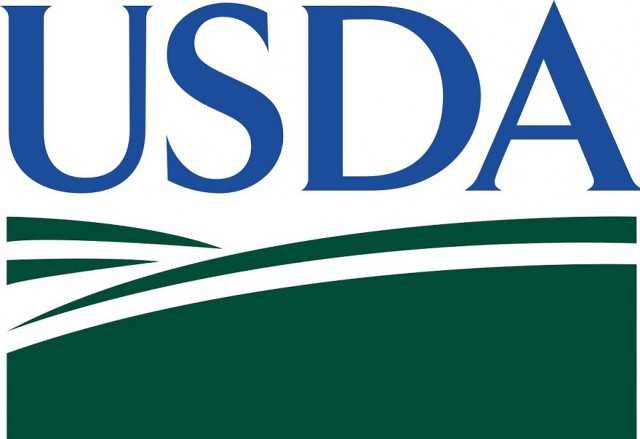MILAN – In its latest semi-annual report on Brazil, the Foreign Agricultural Service (FAS) of the United States Department of Agriculture (USDA) lowered its estimate of Brazilian production for Marketing Year 2023/24 (July-June) to 66.3 million 60-kg bags, green bean equivalent, from the original 66.4 million bags, based on a projected decline in robusta/conilon production.
Arabica production is expected to reach 44.9 million bags, a 12.8 percent increase over the previous season, due to an increase in planted area and higher yield, benefiting from favorable weather conditions in comparison to past harvests. According to Post contacts in the leading coffee producing state of Minas Gerais, producers have indicated greater confidence in the 2023/24 yields.
Robusta/conilon production is projected at 21.4 million bags, 1.4 percent lower than the previous estimate of 21.7 million bags and 6.1 percent lower in relation to the last season. This decrease is due to an expected reduction in yield as a result of adverse weather conditions during the initial phases of the production cycle of the plants, such as high temperatures brought about by the El Niño phenomenon, especially in the state of Espirito Santo, main robusta grower.
Brazil ‘s National Supply Company (CONAB) predicts that the total area allocated for coffee cultivation in the nation in 2023 will be 2.24 million hectares, with 1.88 million hectares dedicated to crops in production and 362.5 thousand hectares in the development phase.
CONAB estimates that 38.16 million bags of Arabica coffee will be harvested, representing 70 percent of the current harvest. CONAB calculates that there will be a 17 percent increase compared to the 2022 harvest, despite the current season being a negative year of the biennial cycle. Robusta/conilon is expected to yield 16.2 million bags, which is an 11 percent decrease compared to the previous season. CONAB uses a different methodology to forecast coffee production than Post and has consistently shown lower estimates.
According to the Brazilian Institute for Geography and Statistics (IBGE), in 2023, Brazilian coffee production should reach a total gross value of R$ 48 billion, with arabica accounting for 77 percent of this sum, generating R$ 37 billion in revenue.
This represents an 8 percent decrease compared to the previous year. Meanwhile, robusta coffee, which brought in R$ 12.7 billion in revenue in 2022, is expected to decrease by 12 percent, generating R$ 11 billion in revenue.
The Southeast Region of Brazil leads in total coffee revenue, with 86.5 percent of total revenue (R$ 41.7 billion), followed by the Northeast Region with an estimated value of R$ 3 billion (6.2 percent), and the North Region with gross revenue of R$ 2.4 billion (5 percent) of the total.
Harvest Outlook Brazil ’s 2022/23 coffee sowing began in March, reaching most of its harvest in June and July, with small areas around the country set to finalize in November. Minas Gerais is the country’s leading coffee producer, followed by Espírito Santo and São Paulo.
Arabica production
Minas Gerais: For 2022/23, the state experienced months of dry weather that were favorable to the advancement of the coffee harvest, with good volumes of rain during the development phase, resulting in coffee grains with good weight and quality in most of the regions within the state. As a result, the state recovered in the average yield in the area under production. This recovery was due to the inclusion of areas that were renewed in recent cycles, especially in the south and center-west of the state. For 2023/24, Post contacts have indicated that crops are flowering well, leading producers to remain optimistic about high production numbers.
São Paulo: The state finalized its 2022/23 harvest in October, with higher productive potential than those registered in the last two years, given the favorable weather conditions reported throughout the harvest cycle. However, the season saw a reduction in production area in relation to 2022, given the eradication of old trees. As such, results of negative biennial are expected in the state, maintaining a plan to expand the renewal of crops to enhance the potential of the 2023/24 season.
Espírito Santo: Suffering from a lack of workforce and labor competition with other states, Espírito Santo is expected to finalize the harvest of arabica coffee in November, though most of the work is over in the majority of the state. The 2022/23 harvest experienced a variation in weather patterns, with irregular and insufficient rains during the beginning of the flowering process and excess winds that defoliated trees in some regions, reducing the productive potential of the trees. Rain was sufficient during the fruit formation and filling phase, favoring the development of the grains and guaranteeing good quality, though with smaller yields than in the previous season.
Many producers in the state are investing in the mechanization of their harvest or sharing of equipment between them, either through individual loans or through associations to guarantee faster harvesting, which may have positive reflections for 2023/24.
Bahia: Overall, grains developed well during the 2022/23 harvest, but the expected impacts of the negative year of the coffee trees have led to smaller production in the state. The state saw a decrease in area under production in most regions, as a way of renewing the vegetative and reproductive potential of the crops, which should have a positive effect for production in the 2023/24 season.
Paraná: The state is in the final stage of harvesting, with 2022/23 production and yield showing an increase in comparison to the previous season. This is credited to favorable weather conditions and higher investments of producers. For 2023/24, the trees have been showing good signs of flowering, which has been bringing optimism to producers.
Robusta production
Espírito Santo: The main producer of robusta/conilon coffee has seen a decrease in production during the 2022/23 cycle, with the productive potential being impacted by unfavorable weather conditions during the flowering stage. For 2023/24, the state hopes to have a more mechanized robusta harvest, utilizing machinery that is traditionally used during the arabica harvest. These machines are currently being tested for this purpose, with good results.
Rondônia: The state has also mechanized its harvest in 2022/23 in some regions, though manual reaping is still prevalent, given the predominance of small-scale (family) farms that plant coffee. There was an increase in area in production and yield, given optimal weather conditions throughout the year.
Bahia: For 2022/23, the state registered an increase in the area under production resulting from the insertion of crops that underwent renovation in the last two years and that have now started to produce. According to the Bahia State Department of Agriculture, Livestock, Irrigation, Fisheries and Aquaculture (SEAGRI), the state has 24 thousand small coffee growers’ farms, which account for 88 percent of the state’s production.
Brazil: Coffee Consumption
Post maintains its forecast for Brazil’s total domestic coffee consumption for MY 2023/24 (July-June) at 22.56 million coffee bags (21.6 million bags of roast/ground and 960,000 bags of soluble coffee). While coffee is the second most consumed drink in Brazil, only behind water, high retail prices have kept consumption from growing exponentially.
Exports
Post forecasts total coffee exports for MY 2023/24 (July-June) at 43.85 million 60-kg bags, green beans, down from the previous estimate of 45.35 million 60-kg bags, due to a slower than expected trade flow of arabica coffee at the beginning of this marketing year, motivated by less than attractive prices in stock markets.
However, the 2023/24 exports are projected to be 22.3 percent higher than the MY 2022/23 exports. The increase in exports is due to the more significant production and the devaluation of the real in relation to the dollar, which benefitted exports.
Brazil exported coffee to 143 countries, and the forecast is for numbers to remain high until the end of the year. United States and Germany were the main destinations of Brazil’s green beans in MY 2022/23, followed by Italy, Japan, and Belgium.
The United States was the primary importer of Brazilian roasted coffee for MY 2022/23 (July-June), accounting for 29.6 percent of this type of coffee export, followed by Argentina, Chile, Paraguay, and Mexico.
Post maintains its estimate for soluble coffee exports at 4.3 million bags in MY 2023/24, 10.3 percent higher than in the previous season. Coffee exporters are reporting shipping delays due to the limited availability of trucks and containers, with waiting times for ship loading having increased, resulting in additional costs for traders and delays for commodities to reach destinations.
Brazilian coffee leaves the country mainly through two ports, accounting for 91 percent of all coffee shipments: Santos, located in the state of São Paulo and responsible for 74 percent of the exports, and the Rio de Janeiro port, which moved 17 percent of the coffee that left Brazil in 2023. These logistical hurdles make it difficult for exporters to significantly increase their trade, as coffee competes with other commodities such as soy, corn, and sugar.
According to the Council of Brazilian Coffee Exporters (CECAFE), robusta coffee exports have grown by 111 percent from January to August 2023 in relation to the same period last year, given its highly competitive nature in the global market and increased demand, following lower than expected production in important providers, such as Indonesia and Vietnam.
CECAFE also estimates coffees that have superior quality or certified sustainable practices accounted for 16.5 percent of total Brazilian coffee exports from January to August 2023, corresponding to 3.77 million bags sent abroad. This volume is almost 30 percent lower than that recorded in the same period of 2022. The main destinations for specialty coffees in the first eight months of 2023 were the United States, with the acquisition of 902,087 bags (24%); Germany, with 489,382 bags (13%); Belgium, with 421,505 bags (11.2%); The Netherlands, with 227,227 bags (6%), and the United Kingdom, with 175,081 bags (4.6%).
Brazil: Coffee Stocks
Post estimates total ending stocks in MY 2023/24 at 4.585 million bags, a 0.8 percent decrease compared to MY 2022/23 (4.62 million bags) due to expected larger coffee exports during the upcoming season.














